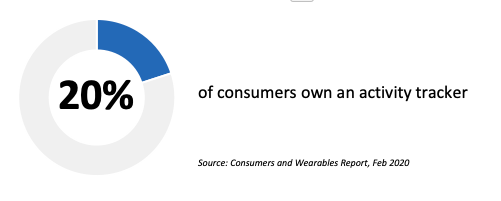
Xiaomi looks to international market
Xiaomi has launched a range of interesting wearables over the past few years, with the one (big) catch that they were aimed primarily at its domestic market. But last week, the company looked further afield, announcing an international version of its Mi Band 5. The Mi Smart Band 5 is an activity tracker with 11 exercise modes, heart rate, sleep and stress tracking, and is water resistant to 50 meters. The company also claims the battery will last for 14 days on a single charge. There’s no word on pricing yet, but we can expect it to be at the low end of the range: the domestic Chinese version costs just $32.
The NPD Take:
- The activity tracker market is in a race to the bottom, but there’s a still an opportunity to gain market share (and make some good money) with a well-equipped, cheap product and that is exactly what Xiaomi appears to be doing. That could set the company up for a stronger ecosystem move later with phones and smartwatches.
- There’s a catch, of course. Xiaomi has no brand presence in the US, outside of the true phone geeks that keep an eye on the company’s interesting smartphones. As such, the company may find it hard to gain the much-coveted retail presence that it will need to make this launch a true success in the US.
Paper+pencil=wearable
A team of researchers at the University of Missouri have published a study detailing how they used a pencil and paper to create bioelectric monitoring wearables. Pencils with cores made of 90 percent graphite or higher conduct significant amounts of energy when you write on standard paper. This graphite can double as a sensing electrode while the paper is the perfect supporting structure. The team says there’s potential to make devices that monitor a person’s temperature or glucose levels. Of course, caveats abound and it could be years before there’s a commercial solution coming out of this.
The NPD Take:
- It’s far from ready for a commercial solution, but there could be interesting applications coming out of this, ranging from medical monitoring though to short term wearables for athletes and even fun kids' toys.